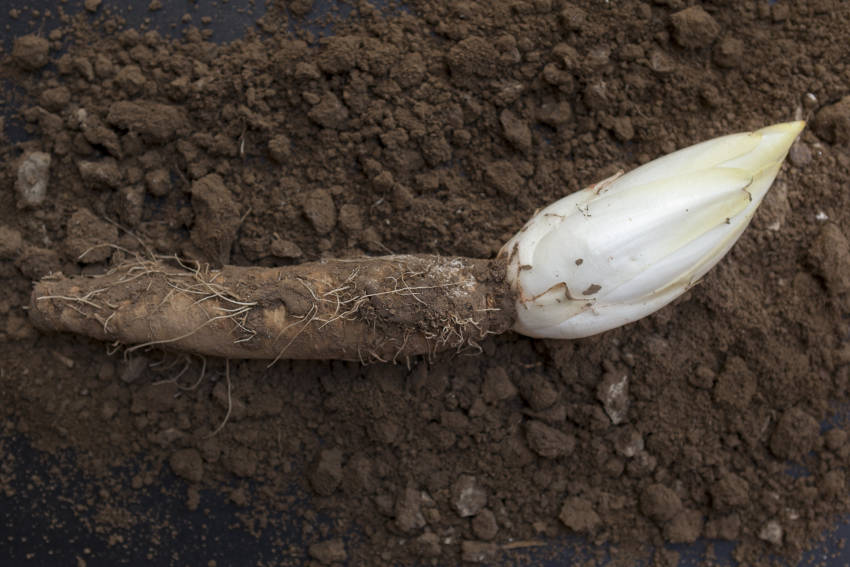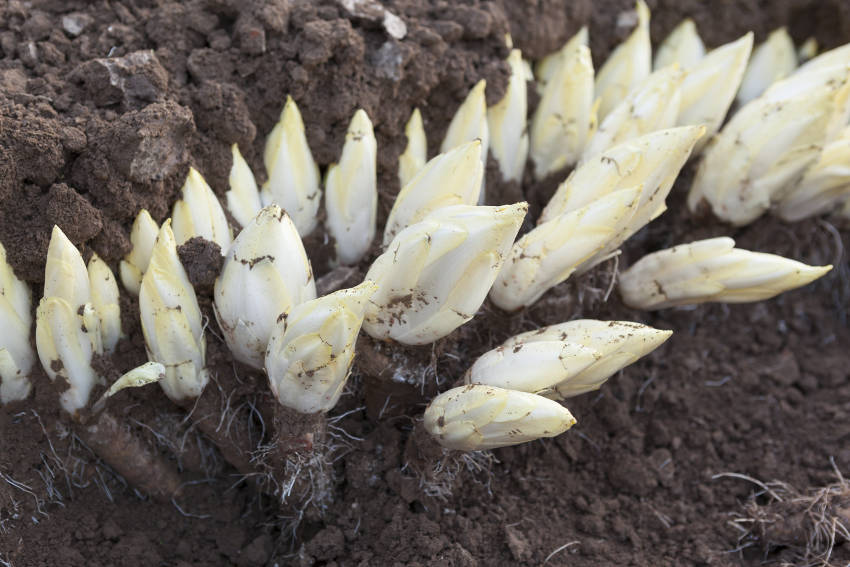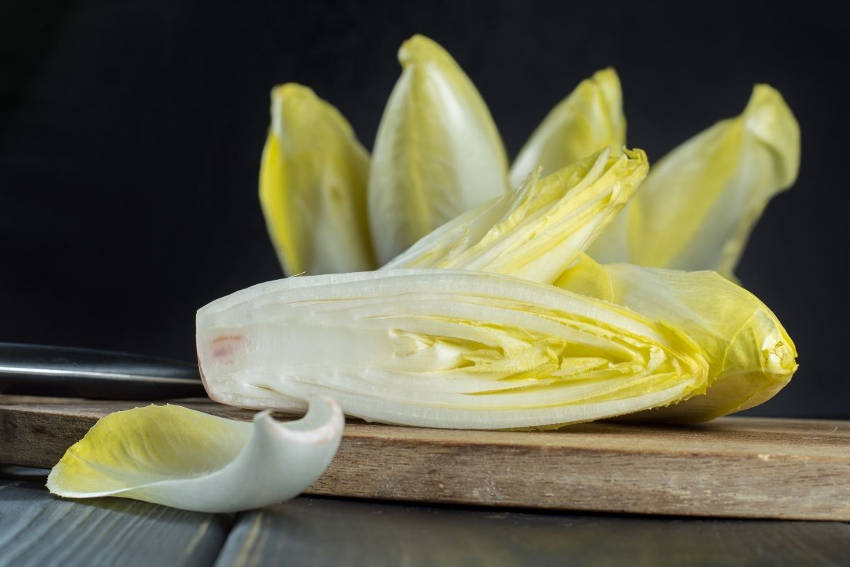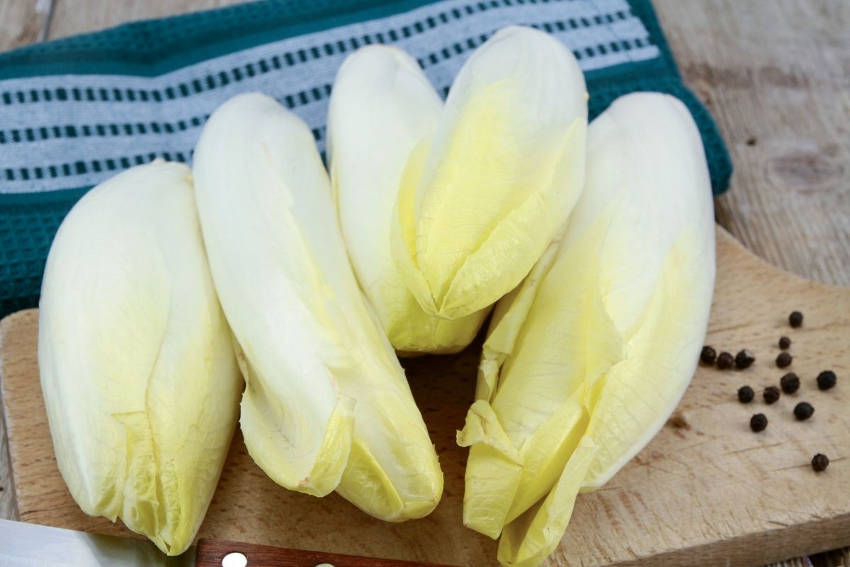It took a happy accident two hundred years ago in Belgium to discover the vegetable known today as witloof. In those times, the plant Cichorium intybus, or chicory, was widely grown as a root vegetable. Its long tap root was dug up and stored over winter, and often ground to make an ersatz coffee.
One year, a farmer near Brussels found that his harvest of roots had been carelessly stored without the protective covering of sand, and in the dark of his cellar it had sprouted pale yellow leaves.
Not wishing to waste his crop, he tasted the shoots. Finding them surprisingly sweet and with none of the usual chicory bitterness, he set about reproducing his mistake on a wider, more deliberate scale. And so, the legend goes, witloof was born.
Chicory as a Green
Grown as a leafy green, chicory is similar to other loose-leaved vegetables such as spinach or kale. The plant will develop bitter green leaves with a sprawling habit. Grown this way, the raw leaves can be used to spike up a salad, or even cooked as a vegetable, although the bitterness can be overwhelming if it's not balanced by other flavours.
Tender Witloof Hearts
However, leave the plant to mature and it will go on to produce a tightly packed heart, which is the form in which witloof is most widely known.
But to get the familiar pale yellow and white leaves instead of the natural bitter green ones, a growing method known as forcing is used. In essence, this means letting the plant grow in total darkness, and it results in a much milder, sweeter, and more tender heart than would otherwise develop.
This heart can be shredded into salads, braised whole as a side, or used in wet dishes such as risotto or soups.
These two end results make witloof an extremely versatile vegetable to grow: you can enjoy two dramatically different kinds of vegetable from the same seed packet, and even from the same sowing.
How to Grow Witloof - In Both Forms
Whether you grow it for leaves or the heart, witloof is a veggie which prefers a relatively cool temperature. Try and time your sowings so that the plant matures long after the height of summer, or it can quickly bolt to seed.
Depending on your climate, it will take around four months between sowing and harvest. If you're growing witloof for the tender hearts, aim to harvest in late autumn, as the forcing process is best done over the winter months.
To grow witloof for its leaves, sow seeds in rows around 25cm apart, spacing each plant between 5cm and 25cm apart. The closer spacings will produce smaller leaves, ideal as a cut and come again salad crop. Using the full 25cm will allow heart production as well as larger, tougher leaves to be used as a cooked green.
For the white and yellow witloof, the process is a little more involved. Sow at the same 25cm spacings, and leave to grow, keeping the plant watered and weed free.
In late autumn, once the plants are nearing maturity, cut the leaves back to around 2cm above the surface. These leaves can be used in the kitchen, although they're likely by now fairly bitter.
It's the roots which are the star of the show for witloof. Dig them up and transplant to pots at least 20cm deep, leaving the 2cm of remaining stem above the surface. The pots can be filled with second-hand compost, as all the nutrition the witloof needs during the forcing stage is already stored in the root.
Move the pots to a cool, dark location such as a basement, with temperatures in the range of 10°C to 16°C ideal. To ensure full darkness, cover each pot with an upturned bucket or other container, making sure there are no drainage holes to let the light in.
Even the smallest amount of consistent light will spoil the forcing process, producing bitter green leaves rather than pale, succulent hearts.
Keep the pots damp, cool, and covered, and after a month or so you should have the distinctive witloof hearts you were aiming for. To harvest, simply use a sharp knife to slice across the stem at soil level, keeping as many of the leaves attached as you can.









